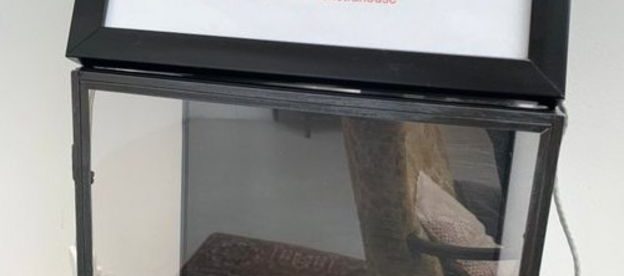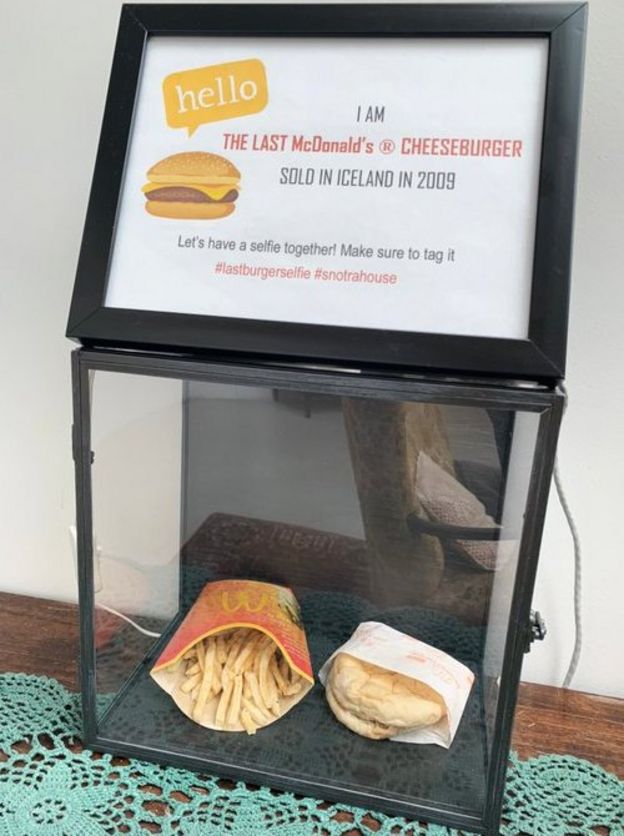The Cheeseburger on Ice

With more than 35,000 stores and 200,000 employees, McDonald’s is truly a global endeavor. There are few places that one can travel to and not be able to get a Big Mac or McNuggets, but Iceland is on that list. After the global economy took a tumble in 2008, the hamburger giant revisited some of its underperforming markets and decided Iceland probably wasn’t worth the ongoing investment. In October of 2009, facing steep competition from local favorite Hambórgarabúllan, McDonald’s announced that it would shutter its three franchises on the island nation, with no plans to ever reopen.
So if you’re in Iceland, you can’t get yourself a McDonald’s cheeseburger — unless, that is, that you’re also willing to become a real-life hamburglar.
The three Icelandic McDonald’s closed their doors, permanently, on October 31, 2009. The day before, though, a customer named Hjörtur Smárason decided to do something few of us would bother to do — he purchased a cheeseburger with the express intent to not eat it. He wasn’t trying to preserve a bit of Icelandic culinary history, though; per Icelandic Review, Hjörtur was running a science experiment: “I had heard something about McDonald’s never decaying so I just wanted to find out for myself whether this was true or not.” According to the Verge, Hjörtur stuck the burger and some fries on a shelf in his garage and waited for something to happen. Very little did.
It turns out that, in the right conditions, a McDonald’s burger will indeed last much longer than one would expect, although eating it wouldn’t be a good idea. McDonald’s itself explains:
In the right environment, our burgers, like most other foods, could decompose.
But, in order to decompose, you need certain conditions – specifically moisture. Without sufficient moisture – either in the food itself or the environment – bacteria and mold may not grow and therefore, decomposition is unlikely. So if food is or becomes dry enough, it is unlikely to grow mold or bacteria or decompose. Food prepared at home that is left to dehydrate could see similar results. Look closely, the burgers you are seeing are likely dried out and dehydrated, and by no means “the same as the day they were purchased.”
But while it may not make for a good meal, the last Icelandic McDonald’s meal is a weird historical relic. It’s still around, but not in Hjörtur’s garage — it’s on display instead. Hjörtur donated it to the Snotra House, a hostel in Iceland’s oldest rural village, Þykkvibær. Here’s what it looks like just after its 10th birthday (does fast food have “birthdays”?), via the BBC.

Pretty good looking for a relatively ancient meal.
If you want to keep an eye on the burger, you may be able to — Snotra House runs a live stream of the burger’s very slow decay, here. But — perhaps as evidence that cheeseburgers are more resilient than technology — the live stream is rarely working, unable to handle the load of virtual visitors.
And besides, it probably doesn’t look much different than it does in the picture, above.
Bonus fact: How does once pronounce Þykkvibær? Click here to find out. (It doesn’t transliterate easily into English.)
From the Archives: Jólabókaflóð: Another fun Icelandic word.
